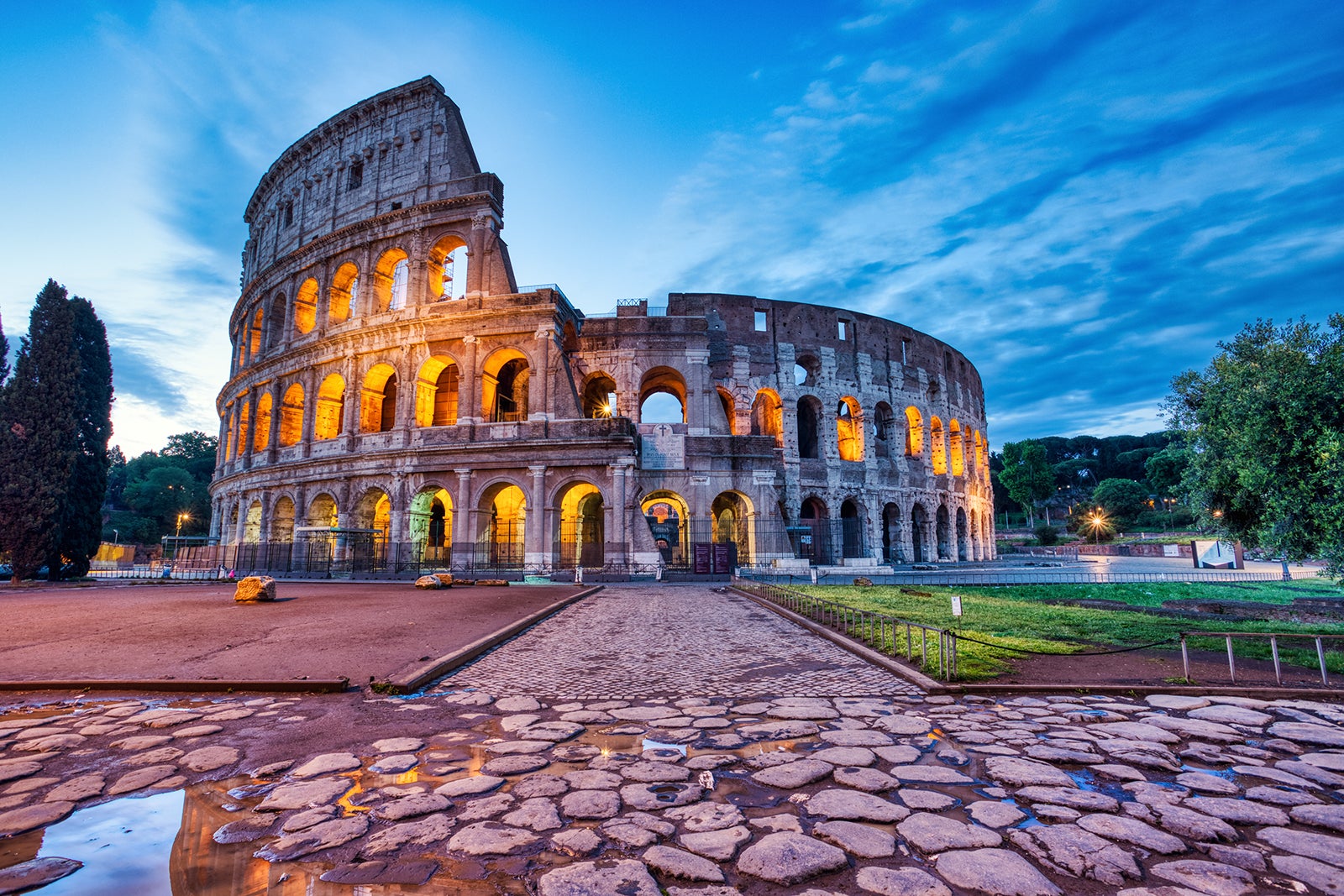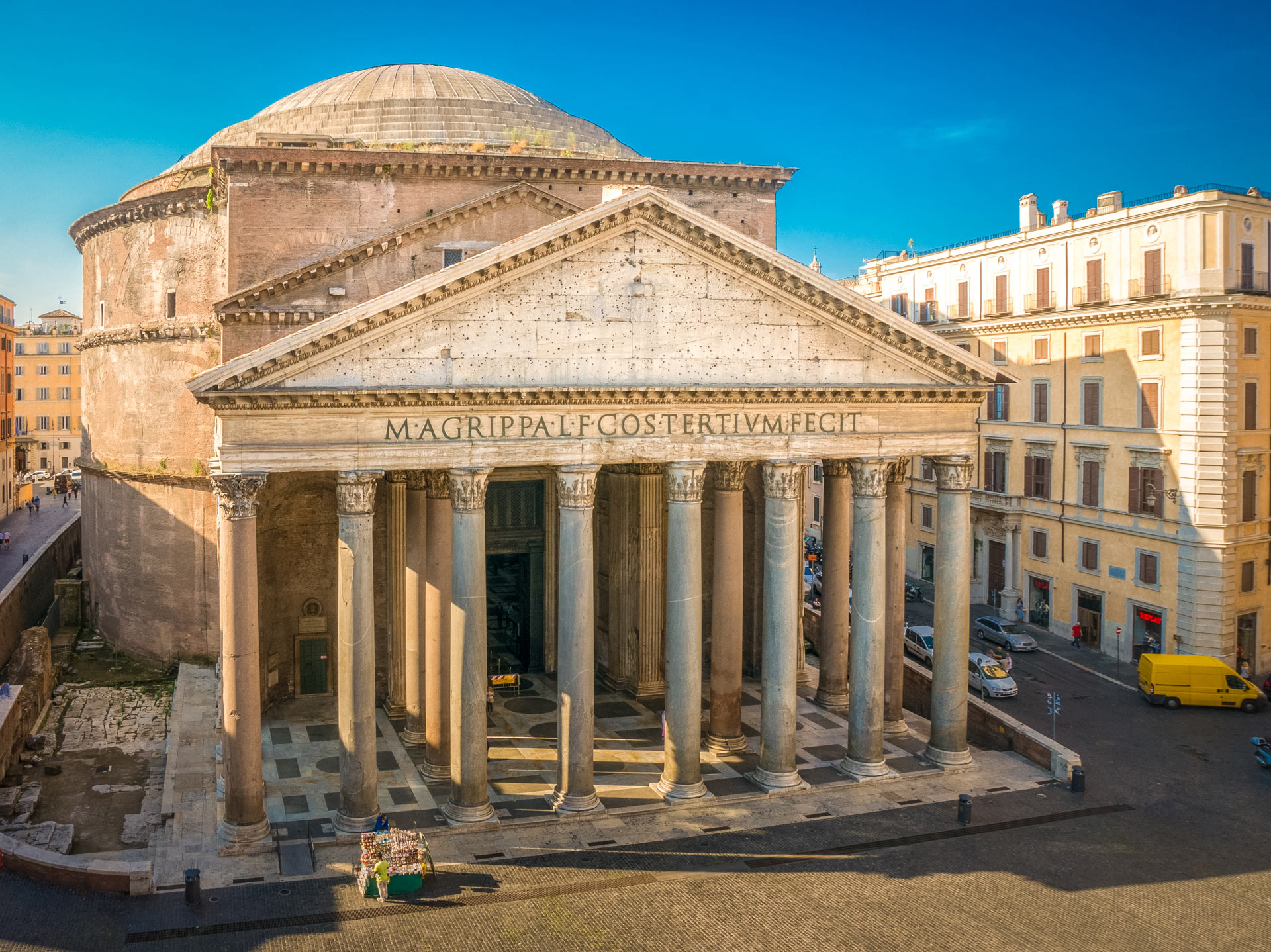
Rome, the "Eternal City," is a destination that transcends mere tourism; it’s a journey through millennia of human history, art, and culture. From the majestic ruins of an empire to the vibrant pulse of modern Italian life, Rome captivates with its sheer density of iconic landmarks, its delicious culinary traditions, and its inimitable atmosphere. Whether you’re a history buff, an art aficionado, a food lover, or simply seeking to immerse yourself in unparalleled beauty, Rome promises an experience that will linger long after you’ve departed.
This comprehensive guide aims to equip you with everything you need to plan an unforgettable Roman adventure, covering its most beloved attractions, a glimpse into its rich history, practical travel tips, accommodation insights, efficient transportation options, and the ideal times to experience its magic.
Unveiling the Crown Jewels: Rome’s Top Attractions

Related Articles about Rome: An Eternal City of Wonders, History, and Unforgettable Experiences:
- Portugal: A Tapestry of Sun-Kissed Shores, Ancient History, and Vibrant Culture
- Chiang Mai: A Traveler’s Guide to Northern Thailand’s Rose
- Penang: A Culinary and Cultural Tapestry Unveiled
- China: A Journey Through Time, Culture, and Unforgettable Landscapes
- The Netherlands: A Journey Through Windmills, Canals, and Centuries of Charm
Rome’s cityscape is a living museum, with ancient wonders seamlessly integrated into its bustling present. Here are the absolute must-sees:
- The Colosseum & Roman Forum: No visit to Rome is complete without stepping into the shadow of the Colosseum, a monumental amphitheater that once hosted gladiatorial contests and public spectacles. Imagine the roar of the crowds and the drama that unfolded within its colossal walls. Adjacent to it lies the Roman Forum, the heart of ancient Roman public life. Wander through the ruins of temples, basilicas, and government buildings, and feel the weight of history beneath your feet.
- The Vatican City: An independent city-state within Rome, the Vatican City is a spiritual and artistic epicenter. St. Peter’s Basilica, a masterpiece of Renaissance architecture, is a breathtaking sight, crowned by Michelangelo’s magnificent dome. Within the Vatican Museums, you’ll discover an unparalleled collection of art, culminating in the awe-inspiring Sistine Chapel, where Michelangelo’s frescoes adorn the ceiling and altar wall.
- The Pantheon: A marvel of Roman engineering, the Pantheon boasts the world’s largest unreinforced concrete dome, still standing strong after nearly 2,000 years. Its oculus, an opening at the apex of the dome, casts a dramatic beam of light that moves throughout the day, creating a truly ethereal experience.
- Trevi Fountain: Toss a coin into the magnificent Trevi Fountain to ensure your return to Rome. This Baroque masterpiece, adorned with mythical figures and cascading water, is a truly romantic and iconic spot, especially when illuminated at night.
- Spanish Steps: Climb the elegant Spanish Steps, a popular meeting point and a picturesque cascade of Baroque stairs connecting the Piazza di Spagna to the Trinità dei Monti church. Enjoy the vibrant atmosphere and the panoramic views from the top.
- Piazza Navona: This lively oval-shaped piazza, built on the site of an ancient Roman stadium, is a hub of artistic and social activity. Admire Bernini’s stunning Fountain of Four Rivers, enjoy street performers, and soak in the charming ambiance.
- Borghese Gallery and Gardens: Escape the city’s hustle and bustle in the serene Borghese Gardens, a sprawling green oasis. Within the gardens lies the Borghese Gallery, home to an exceptional collection of sculptures by Bernini and paintings by Caravaggio and Raphael. Booking tickets well in advance is essential.
- Trastevere: Cross the Tiber River to discover the charming neighborhood of Trastevere. With its narrow cobblestone streets, ivy-clad buildings, and trattorias serving authentic Roman cuisine, Trastevere offers a more local and intimate experience.

A Tapestry of Time: A Glimpse into Rome’s History
Rome’s history is a sprawling epic, a narrative woven through centuries of ambition, conquest, artistic flourishing, and eventual decline, only to be reborn and continue to inspire.
- The Legendary Founding (753 BCE): According to legend, Rome was founded by Romulus and Remus, twin brothers raised by a she-wolf. While mythical, this story imbues Rome with an aura of ancient power.
- The Roman Republic (509 BCE – 27 BCE): Following the overthrow of the monarchy, Rome established a republic, a system of governance characterized by elected officials and a Senate. This era saw Rome expand its influence across Italy and beyond, laying the groundwork for its vast empire.
- The Roman Empire (27 BCE – 476 CE): Under the reign of Augustus, Rome transitioned into an empire, reaching its zenith of power and territorial reach. This period was marked by immense architectural achievements (the Colosseum, Pantheon, aqueducts), advancements in law, and the spread of Roman culture. However, internal strife, economic issues, and barbarian invasions eventually led to the Western Roman Empire’s fall in 476 CE.
- The Middle Ages and Papal Power: Following the empire’s collapse, Rome experienced a period of decline. However, it gradually rose in importance as the seat of the Catholic Church, with the Pope wielding significant temporal and spiritual power. This era saw the construction of magnificent basilicas and the influence of the papacy shape the city’s destiny.
- The Renaissance and Baroque Flourishing: From the 15th to the 18th centuries, Rome experienced a remarkable artistic and architectural rebirth. Artists like Michelangelo, Raphael, and Bernini left an indelible mark on the city, creating masterpieces that continue to awe visitors today.
- Unification of Italy and Modern Rome: In 1870, Rome became the capital of a unified Italy. The city has since evolved into a vibrant modern metropolis, balancing its ancient heritage with the dynamism of contemporary life.
Navigating the Eternal City: Essential Travel Tips
To make your Roman holiday seamless and enjoyable, keep these tips in mind:
- Book Accommodation and Popular Attractions in Advance: Especially during peak season, popular hotels and attractions like the Vatican Museums, Colosseum, and Borghese Gallery book up quickly. Secure your bookings months ahead to avoid disappointment.
- Wear Comfortable Shoes: You’ll be doing a lot of walking! Rome’s cobblestone streets and vast historical sites demand comfortable footwear.
- Stay Hydrated: Especially during warmer months, carry a reusable water bottle. Rome has numerous public fountains ("nasoni") where you can refill your bottle for free.
- Learn a Few Basic Italian Phrases: While English is spoken in tourist areas, knowing a few simple phrases like "Ciao" (hello/goodbye), "Grazie" (thank you), and "Per favore" (please) will be greatly appreciated.
- Be Aware of Pickpockets: Like any major tourist city, be vigilant in crowded areas, especially on public transport and around popular attractions. Keep your valuables secure.
- Embrace the "Dolce Vita": Don’t rush. Take your time, savor the food, enjoy leisurely strolls, and soak in the Roman atmosphere.
- Consider a Roma Pass: If you plan to visit many attractions and use public transport frequently, a Roma Pass can offer good value, including free entry to some sites and unlimited travel.
- Tipping Etiquette: Service charges are often included in restaurant bills ("coperto"). If you’re happy with the service, a small additional tip (a few euros) is appreciated but not mandatory.
A Home Away From Home: Accommodation Options
Rome offers a diverse range of accommodation to suit every budget and travel style:
- Luxury Hotels: For an opulent experience, consider hotels near the Spanish Steps, Via Veneto, or the Pantheon, offering impeccable service and prime locations.
- Boutique Hotels: Many charming boutique hotels are scattered throughout the city, often in historic buildings, providing a unique and intimate atmosphere.
- Mid-Range Hotels: You’ll find a wide selection of comfortable and well-located mid-range hotels throughout Rome, offering good value for money.
- Budget-Friendly Options: Hostels, guesthouses, and budget hotels are readily available, particularly in areas slightly outside the immediate city center, but still well-connected by public transport.
- Apartment Rentals (Airbnb, etc.): Renting an apartment is an excellent option for families or those seeking a more independent and local experience, allowing you to cook your own meals and enjoy more space. Consider neighborhoods like Trastevere or Monti for a charming stay.
Neighborhood Recommendations:
- Centro Storico (Historic Center): Ideal for first-time visitors, placing you within walking distance of major attractions.
- Trastevere: Offers a bohemian and authentic Roman vibe with excellent dining options.
- Monti: A trendy and artistic neighborhood with independent boutiques and cozy trattorias.
- Prati: A more residential and elegant area, home to the Vatican and good for those seeking a quieter stay.
Getting Around the Eternal City: Transportation
Rome’s public transportation system is efficient and can get you to most of its major attractions:
- Metro: Rome has three metro lines (A, B, and C) that are useful for covering longer distances. Line A connects the Vatican to Termini Station and the Spanish Steps, while Line B connects the Colosseum to Termini.
- Buses and Trams: An extensive network of buses and trams covers the city, reaching areas not served by the metro. Purchase tickets before boarding from tabacchi shops or ticket machines. Validate your ticket upon boarding.
- Walking: The best way to discover Rome’s hidden gems and soak in its atmosphere is on foot. Many attractions are clustered together, making walking a convenient and rewarding option.
- Taxis: Taxis are readily available but can be expensive. Ensure the meter is running and opt for official white taxis.
- Ride-Sharing Services: Services like Uber are available in Rome, offering an alternative to traditional taxis.
- Cycling: While challenging due to cobblestone streets and traffic, cycling can be a fun way to explore certain areas, especially along the Tiber River. Bike rental services are available.
The Sweet Spot: Best Time to Visit Rome
Rome’s charm is undeniable year-round, but certain times offer a more pleasant experience:
- Spring (April-May): This is arguably the best time to visit Rome. The weather is mild and pleasant, with blooming flowers adding to the city’s beauty. Crowds are present but generally more manageable than in summer.
- Autumn (September-October): Another excellent choice, with comfortable temperatures, fewer crowds than summer, and beautiful autumn foliage. The light is often softer, making for stunning photography.
- Summer (June-August): Rome experiences hot and humid summers, with large crowds and higher prices. If you visit during this time, be prepared for the heat, stay hydrated, and book well in advance. Early mornings and late evenings are ideal for sightseeing.
- Winter (November-March): While cooler, winter offers a more authentic and less crowded experience. You’ll find lower prices and a cozy atmosphere. Christmas and New Year’s Eve bring festive decorations and events. However, be prepared for potential rain.
Shoulder Seasons (March, November): These months can offer a good balance of pleasant weather and fewer crowds, making them attractive alternatives.
Rome is more than just a destination; it’s an experience that unfolds with every step, every taste, and every glimpse of its timeless beauty. Whether you’re gazing at ancient ruins, marveling at Renaissance art, or simply enjoying a gelato in a sun-drenched piazza, the Eternal City will undoubtedly steal a piece of your heart and leave you yearning for its return. Plan your trip, embrace the magic, and prepare to be captivated by the enduring allure of Rome.





